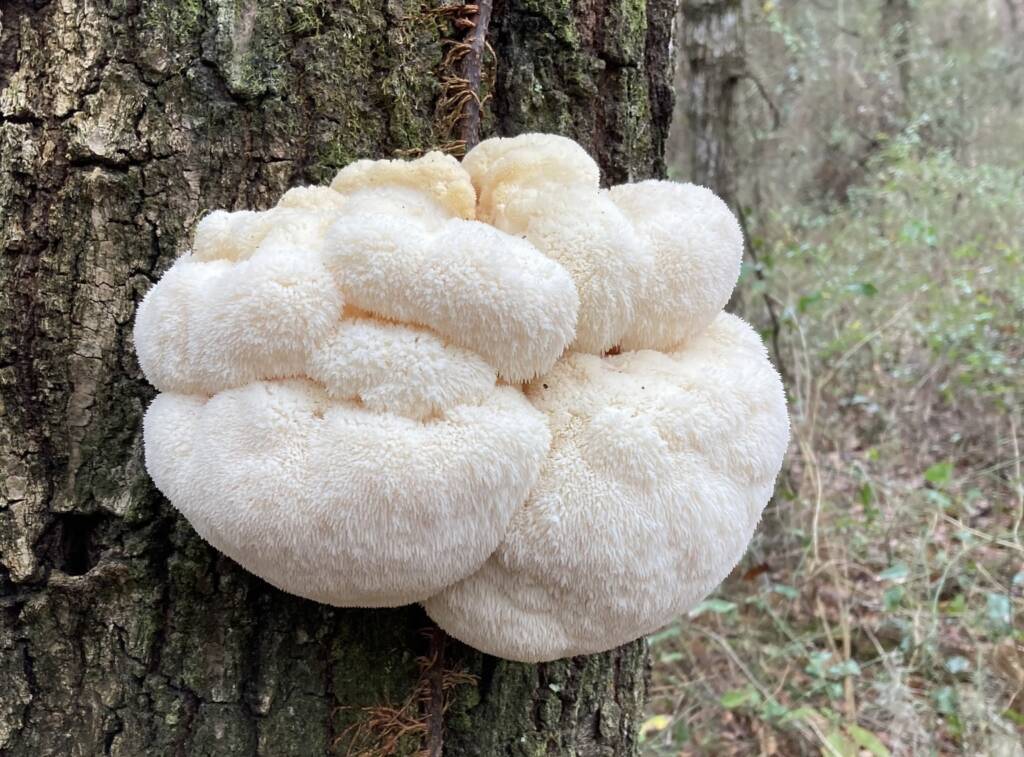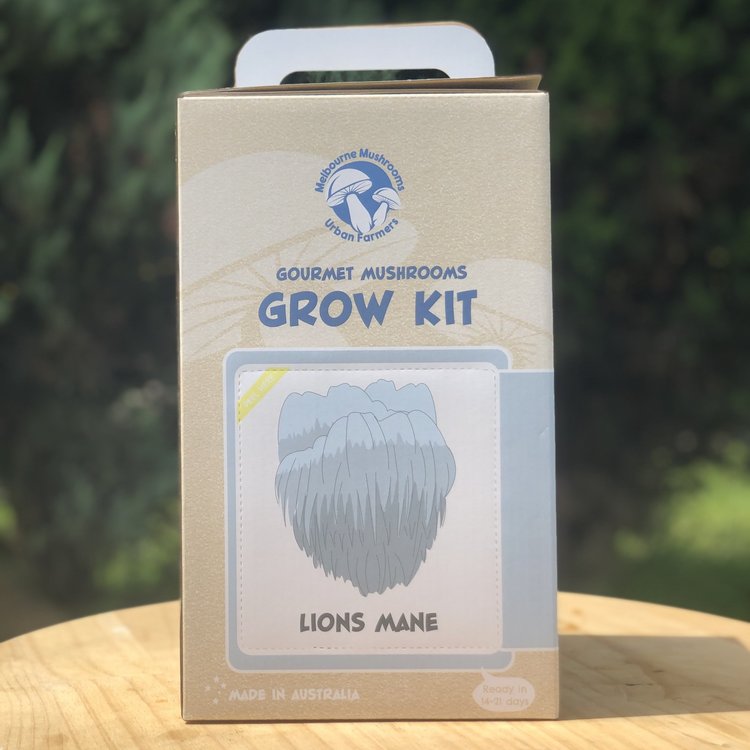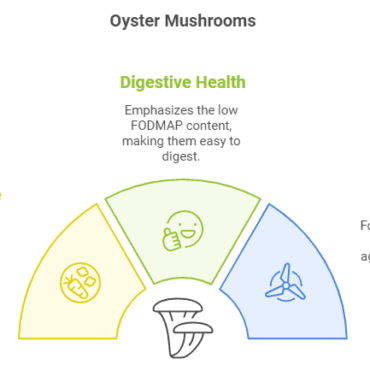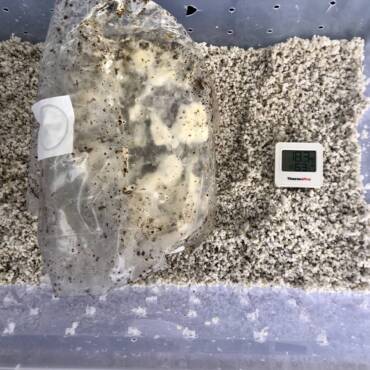The Inner West Mushrooms Guide to Lions Mane
Lion’s Mane is a fascinating mushroom that looks like a cascading white mane and has a delicate taste and texture similar to meat. People love to use it in cooking. But did you know that Lion’s Mane extract in powder form can also help with thinking? It can help older people remember better and think more clearly. Scientists are studying how Lion’s Mane might protect the brain and help people with cognitive problems.
This guide will delve into this fascinating mushroom’s origin, traditional use, health benefits, and culinary applications. By discovering more about Lion’s Mane, you can add it as a functional food and medicinal ingredient to support cognitive function and overall well-being. This post contains valuable insights and practical tips for incorporating Lion’s Mane into your diet and lifestyle. You’ll find something useful here whether you’re a foodie, health-conscious or simply Lion’s Mane curious.
The History of Lion’s Mane
Lion’s Mane is a type of fungus highly valued in many cultures worldwide. It’s not only delicious but also has some incredible medicinal properties. Traditional Chinese medicine has used Lion’s Mane, also known as “Hou Tou Gu,” for centuries to aid digestion, boost the immune system, and promote overall well-being. Historical records from China and Japan suggest it can improve cognitive function and memory. So, it’s no wonder that Lion’s Mane is considered a delicacy in Asian cuisine and used in soups, stir-fries, and herbal tonics.
Lion’s Mane Appearance

Lion’s Mane has a unique and beautiful appearance. It has a cascading white mane that resembles icicles radiating from a central point. The spines vary in thickness and length, giving it a captivating and intricate texture. And when it’s fully grown, the Lion’s Mane mushroom can weigh several kilograms! The fruiting body is typically white, cream, or pale yellow, giving it a distinctive and enchanting look. No wonder mushroom enthusiasts and foodies alike highly seek after Lion’s Mane.
Classification and Common Names
Lion’s Mane is a mushroom belonging to the Hericiaceae family and the fungal order Russulales. Its scientific name is Hericium erinaceus, which actually comes from its genus (Hericium) and species (Erinaceus). The name Hericum is derived from the Latin word for “hedgehog”. Other common names for this fantastic mushroom include Monkey’s Head, Bear’s Head, and Bearded Tooth Mushroom.
Natural Habitat and Distribution
Lion’s Mane is a fungus found in many parts of the world, including North America, Europe, and Asia. It grows best in temperate forests with hardwood trees like oak, maple, beech, and birch. This fungus can grow using dead or living trees as a host. It most commonly appears in late summer or early autumn. Lion’s Mane typically grows on rotting hardwood logs, stumps, or living trees. Although generally found in forested areas, you can also cultivate Lion’s Mane indoors or in controlled environments.
How We Grow Our Lion’s Mane
We grow Lion’s Mane in a controlled environment at our urban farm. We monitor the humidity, CO2 levels, and lighting conditions to ensure the best possible growth of the fruiting bodies. We never use sprays or chemicals to maintain our commitment to natural cultivation. Once we harvest the mushrooms, we sell them at Farmer’s Markets on the same day. Any excess harvest is carefully dried and ground into a fine powder.

Health Benefits of Lion’s Mane
Lion’s Mane is a natural supplement that can benefit your brain, immune system, and gut health. One of its key components is nerve growth factor (NGF), which plays a crucial role in the growth, repair, and maintenance of neurons in your brain. Recent studies suggest that Lion’s Mane can enhance the production of NGF, leading to improved cognitive functions such as memory, learning, and concentration. So, if you want to boost your brain, Lion’s Mane might be the perfect supplement for you.
- Neuroprotective Properties: Studies have shown that Lion’s Mane protects against damage and supports healthy brain function. Studies suggest that it contains compounds that can promote the growth of neurons, repair damaged neurons, and protect the brain from stress and inflammation. This can help improve memory, cognitive function, and mood, which is excellent news for anyone looking to stay sharp throughout life.
- Mood Regulation and Stress Relief: Lion’s Mane is a natural way to improve mood and reduce stress. Studies have found that Lion’s Mane can positively affect neurotransmitters in the brain, like serotonin and dopamine, which play a crucial role in regulating mood, managing stress, and maintaining emotional stability. By helping to balance neurotransmitter activity, Lion’s Mane can potentially alleviate symptoms of anxiety, depression, and other mood disorders, giving you a greater sense of calm, balance, and overall mental wellness.
- Gut Health: Lion’s Mane is packed with dietary fibre, vitamins, and minerals that help keep your digestive system in shape by promoting regularity, nutrient absorption, and a balanced gut microbiome. It has anti-inflammatory properties that can help reduce digestive discomfort and lower the risk of gastrointestinal disorders.
- Potential Immune-Boosting Effects: Researchers believe that Lion’s Mane possesses properties that can boost the immune system and assist the body in fighting infections and diseases. Studies have shown that Lion’s Mane contains polysaccharides and beta-glucans that can stimulate immune cell activity, increase antibody production, and enhance overall immune function. By strengthening your immune system, Lion’s Mane can help protect you against harmful pathogens, fight cancer, lower the risk of infections, and promote overall health and wellness.

Scientific Evidence
Several studies have been conducted on the effects of Lion’s Mane mushroom extract on cognitive function. One such study, published in Biomedical Research, found that Lion’s Mane mushroom extract improved cognitive function in mice with age-related cognitive decline. Another study published in the International Journal of Medicinal Mushrooms reported that Lion’s Mane mushroom supplementation enhanced cognitive function in older adults with mild cognitive impairment. These studies suggest that the Lion’s Mane mushroom may have significant potential to support cognitive health and wellness. See the References section below for more information.
Note: Check out the Scientific Studies and Research Papers section below to learn more.
Culinary Uses of Lion’s Mane
Lion’s Mane is a popular cooking ingredient with a delicate umami flavour. It can enhance many different dishes and is an excellent option for vegetarians and non-vegetarians. Although it may not contain as much protein as meat, its texture can serve as a substitute. Lion’s Mane offers a unique and valuable addition to any dish, with endless possibilities for creative cooking.
There are plenty of ways to add Lion’s Mane to your diet. For instance, you can use fresh Lion’s Mane in various dishes like stir-fries, soups, salads, and pasta. Sauteed Lion’s Mane can also make a delicious addition to tacos, burgers, or risotto. A 150g of fresh Lion’s Mane should do the trick for one to two people. And suppose you’re interested in getting some cognitive benefits. In that case, add 1/2 teaspoon of Lion’s Mane powder to your coffee or smoothie.
The easiest and tastiest way to enjoy Lion’s Mane is by sautéing them with garlic and fresh thyme:
1. Heat a skillet over medium heat and add olive oil, ghee or unsalted butter.
2. Slice the Lion’s Mane like a sandwich steak and dust it with Lion’s
3. Sauté it with garlic and fresh thyme until golden brown and crispy on the edges.
4. Season it with salt and pepper after cooking.
5. Top it with spring onion and enjoy with a fried or scrambled egg on sourdough toast with avocado for a delicious breakfast or lunch.
Tips: If you want your Lion’s Mane crispy and not soggy, add salt after cooking instead of during. Try mixing in some smoked paprika after cooking for an extra flavour boost.
See Links to Additional Information and Recipes below for more recipes.
Tips for Selecting and Storing Fresh Lion’s Mane
Lion’s Mane is a delicate mushroom with a limited shelf life, which is why you might not find it in the produce section of your local supermarket. The fruiting bodies may get damaged easily, making them unsellable if not handled carefully.
- When selecting fresh Lion’s Mane, choose firm but spongy fruiting bodies free from blemishes or discolouration.
- Lion’s Mane should be snow white or pale yellow in appearance.
- Look for mushrooms with intact spines and a fresh aroma, indicating Lion’sl freshness.
- Store fresh Lion’s Mane in a paper bag or breathable container in the reLion’sator.
- Avoid storing them in plastic bags or airtight containers, as this can cause moisture buildup and accelerate spoilage.
- You can typically store fresh Lion’s Mane in the refrigerator for up to one week.
- Like fish, it’s best to consume them as soon as possible for the freshest flavour and texture.
- When ready, brush off any dirt or debris and incorporate them into your favourite Lion’s Mane recipes.
- Washing Lion’s Mane grown in a controlled environment is unnecessary – doing so will lead to rapid deterioration.
Get your fresh Lion’s Mane here.
Lion’s Mane Powder
If you’re looking to incorporate Lion’s Mane into your diet, there are two options you can consider: fresh fruiting bodies or powdered supplements. Each has its benefits. Fresh Lion’s Mane has an amazing texture and flavour, ideal for cooking techniques like sautéing, grilling, or roasting. On the other hand, powdered supplements provide long-term cognitive benefits.
Adding Lion’s Mane powder to your favourite recipes and meals is easy. You can stir it into your beverages like tea, smoothies, or soups, making it a convenient way to enjoy the health benefits of Lion’s Mane daily.
If you’re a coffee person, you can boost your morning cup of coffee by stirring in 1/2 teaspoon of Lion’s Mane powder. This provides a subtle earthy flavour and potential cognitive benefits, enhancing your focus and mental clarity throughout the day. You can even add Lion’s Mane to your Bulletproof coffee for a bigger kick to your day.
Here are some other creative ways to use Lion’s Mane powder:
- Smoothies: Blend Lion’s Mane powder with your favourite fruits, leafy greens, and protein sources like yogurt or protein powder for a nutritious and energising smoothie.
- Tea: Mix Lion’s Mane powder into herbal oLion’sn teas for a soothing and rejuvLion’sg beverage.
Soups and sauces: Add Lion’s Mane powder to soups, sauces, or gravies to boost flavour and nutritional benefits. - Baking: Incorporate Lion’s Mane into baked goods such as muffins, cookies, or energy bars for a nutritious twist on your favourite treats.
- Salad dressings: Mix Lion’s Mane powder into homemade salad dressings for added depth and nutritional value.
- Porridge or yogurt: Stir Lion’s Mane powder into porridge or yogurt for a quick and easy breakfast or snack.

Using a Grow Kit
Thanks to Lion’s Mane grow kits, you can have everything you need to grow this fantastic mushroom, even if you’re new to growing mushrooms or have limited space. The kit includes substrate, mycelium, and step-by-step instructions to guide you through the entire process from inoculation to harvest. With Lion’s Mane grow kits, you can experience the joy of growing your produce while witnessing the fascinating process of mushroom growth firsthand.
Growing Lion’s Manes at home using a grow kit is a simple process that requires only a few easy steps.
- Find a suitable room with consistent temperature, humidity, and airflow, such as a kitchen.
- Follow the instructions and cut the box open with a clean knife.
- Lightly spray the exposed substrate with water two to three times a day to encourage the growth of mushroom fruiting bodies.
- With proper care and attention, you can expect to harvest fresh Lion’s Manes within a few weeks of initiating fruiting conditions.

Tips for Successful Cultivation and Harvesting
By paying careful attention to detail and adhering to these tips, you can enjoy a bountiful harvest of fresh and flavorful Lion’s Manes frolion’s homegrown crop.
- Maintaining a clean environment throughout the growing process is essential to minimise the risk of contamination from competing organisms.
- Keep the exposed substrate hydrated and monitor humidity levels to prevent Lion’s drying out or excess moisture buildup.
- Proper ventilation and airflow are also crucial to promoting healthy mycelial growth and preventing the accumulation of carbon dioxide.
- When harvesting Lion’s Manes, it’s best to use clean and sharp tools to minimise damage to the fruiting bodies and avoid disturbing the surrounding substrate.
- Harvest the mushrooms when they are spongy but firm before they decay.
- Cooking Lion’s Mane when it is too young results in a rubbery texture while allowing it to become too old leads to an unpleasant sour taste.
Potential Risks and Considerations
Lion’s Mane is generally safe to consume, but you should be cautious if you have a mushroom allergy. Allergic reactions are rare but can cause rash, swelling, or difficulty breathing. Start with a small amount of Lion’s Mane and monitor for symptoms. If you take medication for blood clotting, diabetes, or immune disorders, Lion’s Mane supplements may interact with them. It’s wise to consult with your healthcare provider before taking Lion’s Mane supplements, especially if you’re pregnant or breastfeeding, have a child, or have a compromised immune system.
Conclusion
Lion’s Mane is a unique-looking mushroom that is becoming increasingly popular due to its potential health benefits. It’s believed to support cognitive function and overall well-being, and there’s a rich tradition and emerging scientific research to back it up. Whether you’re a foodie or someone who’s health-conscious, Lion’s Mane offers exciting opportunities to explore. However, it’s always a good idea to consult a healthcare provider before incorporating Lion’s Mane into your routine. Thanks for taking the time to learn more about this amazing mushroom with us.
Share Your Experience
Join our vibrant community and share your journey with Lion’s Mane. Your experiences, recipes, and insights can inspire and empower others to explore the benefits of this amazing superfood. Working together can create a supportive and nurturing community that promotes health and wellness through natural and nourishing foods. Let’s embark on this journey together and transform our lives with Lion’s Mane. Leave a comment below or contact us, and be sure to sign up for our newsletter.
References and Further Reading
Scientific Studies and Research Papers:
Potential neuroprotective effects:
- Hirokazu Kawagishi et al. “Erinacines A, B and C, strong stimulators of nerve growth factor (NGF)-synthesis, from the mycelia of Hericium erinaceum.” Tetrahedron Letters 35.10 (1994): 1569-1572. Science Direct
- Kawagishi, Hirokazu et al. “Hericenones C, D and E, stimulators of nerve growth factor (NGF)-synthesis, from the mushroom Hericium erinaceum.” Tetrahedron Letters 36.29 (1995): 4561-4564. Semantic Scholar
Cognitive function improvement:
- Mori, Koichiro et al. “Improving effects of the mushroom Yamabushitake (Hericium erinaceus) on mild cognitive impairment: a double-blind placebo-controlled clinical trial.” Phytotherapy Research 23.3 (2009): 367-372. Wiley Online Library
Neuroprotective effects:
- Lee, Kyung-Tae et al. “Hericenones and erinacines: stimulators of nerve growth factor (NGF) biosynthesis in Hericium erinaceus.” Mycology 2.2 (2011): 92-98. Research Gate
- Lai, P. L. et al. “Neurotrophic properties of Lion’s mane medicinal mushroom, Hericium erinaceus (Higher Basidiomycetes) from Malaysia.” International Journal of Medicinal Mushrooms 15.6 (2013): 539-554. National Library of Medicine
Antioxidant and anti-inflammatory effects:
- Wang, Miao-Miao et al. “Neuroprotective effect of Hericium erinaceus on alcohol-induced brain damage via anti-oxidative and anti-inflammatory mechanisms.” Neural Regeneration Research 12.12 (2017): 2032-2042. MDPI Open Access Journals
Potential anti-depressive effects:
- Nagano, M. et al. “Reduction of depression and anxiety by 4 weeks Hericiumerinaceus intake.” Biomedical Research 31.4 (2010): 231-237 National Library of Medicine
These studies support Lion’s Mane’s potential cognitive, neuroprotective, antioxidant, and anti-inflammatory benefits. However, more research is needed to understand its mechanisms of action and therapeutic potential fully.
In the News
- Mushroom sales are shooting up as people look to reduce meat consumption and boost their health. ABC News
- Australian scientists discover an edible mushroom capable of nerve growth. Sky News
- Improving memory: Lion’s mane mushrooms may double neuron growth. Medical News Today
- Mushrooms magnify memory by boosting nerve growth. UQ News
Recommended Books and Resources:
- Growing Gourmet and Medicinal Mushrooms by Paul Stamets
- Healing Mushrooms: A Practical and Culinary Guide to Using Mushrooms for Whole Body Health by Tero Isokauppila
- Mycelium Running: How Mushrooms Can Help Save the World by Paul Stamets
- Mushroom Cultivation: An Illustrated Guide to Growing Your Own Mushrooms at Home by Tavis Lynch
Links to Additional Information and Recipes:
- Lion’s Mane Recipes:
- Lion’s Mane Information:
- Lion’s Mane Cultivation:




1 Comment
Comments are closed.